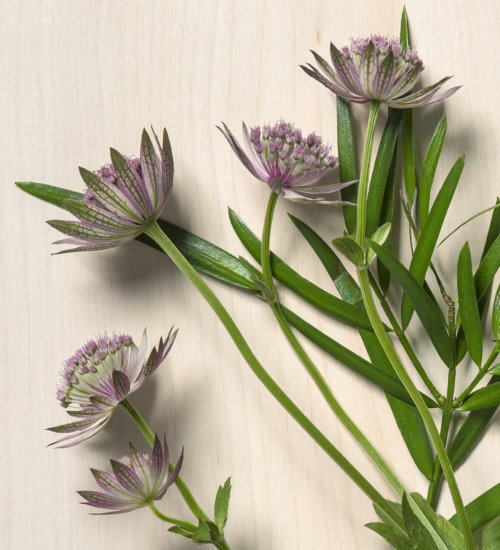
Ask Ella: A Closer Look at the Intricacies of Astrantia
Ask Ella is a recurring Garden Collage feature where we ask our in-house florist, Ella Stavonsky, about floral design– including the history of, origin, and maintenance that goes into some of the most intriguing flowers on the market today. This column is dedicated exclusively to common and rare varieties of flowers you’re likely to find at your local market. This week, we spotlight astrantia, an exquisite and finely-detailed bloom that looks like a bit of bespoke jewelry.
Sometimes known by the more general (and decidedly less elegant) name of masterwort, astrantia (Astrantia major) has a very dainty shape, which is why it is often a popular choice for wedding arrangements. In hues of pinks, purples, and whites, astrantia blooms with a thin, papery layer of bracts– easily mistaken for petals– surrounding the tiny flowers within for an overall appearance reminiscent of pincushion protea. Each stem comes with several blooms, and taken together looks like a small, delicate fairy village.
In bouquets, astrantia’s subtle shape and slightly-sweet smell make it an ideal choice for smaller arrangements, where it acts as a striking detail. We love it best mixed with colors in the same family, like the soft pinks of cottage roses or the forest beauty of white hellebores. For greens, just about anything works– from the vivid pigment of myrtle to the powdered hue of round eucalyptus to the velvet gray of dusty miller. Care for astrantia with daily changes of cold water and trims to the stem. After a few days, you can hang it upside down and dry it, to preserve one of nature’s more beautiful and elaborate designs.


































